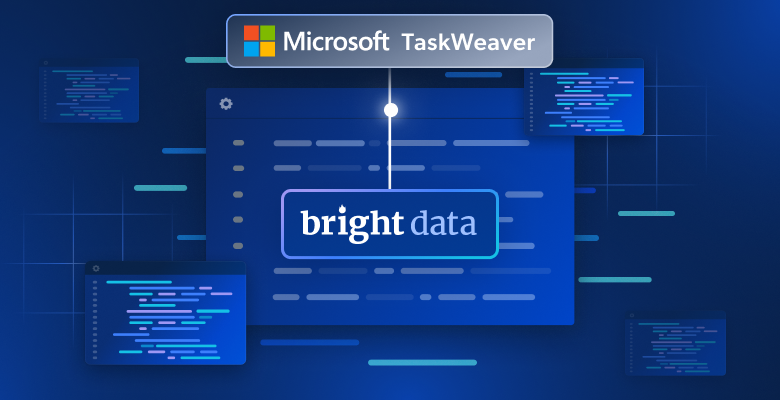You might think you know the lack of equality between male and female founders, but could you really guess the actual figure? When we looked at our gender split findings from purely active companies on a global scale, the number of female founders was just 10%.
In this latest report by The Classification Guru, we take a deep dive into the state of diversity in the business world. Just how big is the male/female founder divide, and how can we highlight the real facts- who’s really getting the funding, and why?
We decided to talk to our friends over at Bright Data, the world’s no. 1 web data platform, they provide public web data in the most efficient, reliable, and flexible ways. Thanks to their Cruncnbase datasets, we were able to conduct the following research to show you why diversity in business needs to come off the back burner, and take a more prominent position, especially in small businesses.
Methodology
We reviewed a database containing global business information, including sources from Crunchbase. This data contained public details of 31,388 founders and investors of various types of organizations across the globe, some founders started multiple companies, so we deduplicated this down to 14,877.
There were three types of entity – Company, Investor, and School, either active or closed. For this blog, we excluded Schools and Investors and looked specifically at Companies, and focussed on active companies.
Founder’s names were provided as presented in the public domain but gender information wasn’t available. In order to classify each founder by gender (male/female) we separated the first names out, created a unique list of 7681 first names, and used a company called Gender-API to classify gender based on that person’s first name. While we can’t guarantee this is 100% accurate, we believe this is the best way to populate this information. There were 293 names that could not be matched, so we used Google search to confirm gender. Any names where genders could not be identified were excluded, this was 11 in total.
For the purpose of this article, we’ll consider founders and owners to be the same thing. This is not an expansive list of businesses, it’s one dataset with information globally, but it was still so much fun to interrogate nonetheless!
The Results
Let’s get into it. From our data, what is the gender split by active companies globally? As mentioned earlier, it’s showing a lot lower than you would imagine.

This falls way below the findings of the World Bank (who have their own gender data portal BTW!) Their findings were that 1 in 3 businesses are owned by women globally.

This data represents all types of businesses, so from start-up businesses to large corporations. So where is the discrepancy coming from? We suspect it’s a result of female founders taking up a higher percentage of startups and “solopreneurs”. Crunchbase tends to hold databases of large businesses.
What does this mean? We are missing out on female representation. The numbers are showing a lot lower than they could be due to the lack of spotlight on small and solo-owned businesses.
So we’ve highlighted the gender divide globally, but what about by region?
In the UK
Let’s start here in the UK. This country has shown diversity progress in the past 10 years, but the data doesn’t lie, it’s still horrifically low. Just 8% of companies in the UK are founded by women.
Our data originally showed over 1200 companies in the UK. We got down to 532 by sorting the data by unique founder, as well as excluding 261 investors and 53 schools.

How does this fare with the UK stats overall?
According to UENI, of a sample of 22,257 small business owners in the UK, 32.37% were female, a much better number however these are only smaller businesses and will not represent the full spectrum of the different types of business.

So, what about the bigger ones? Well, this is harder to find information on, we suspect because there will be fewer females, as our review of the Crunchbase database highlights. And in the UK (and Europe) this information is not collected at the point when businesses are set up, so it’s very hard to track.
In the US
We chose to look next at the US due to the similarity with the UK of culture and market. This was backed up by the data: 11% of females are listed as founders in the US data.

But what about other studies?
According to an article written for incfile by Sarah Hollenbeck, the statistics are quite stark.
- In 2021, 49% of startups were formed by women.
- Only 2.5% of startups have solely female founders.
- 14% of startups have female CEOs.
These numbers align more closely with the data we reviewed, but it shows you really have to dig into the data to get the real truth. We always emphasize context is extremely important, this is particularly true in this instance where we’re not always comparing “apples for apples”. Many would look at the first statistic and assume that women who are starting businesses are thriving, yet the reality is far from that. In fact, the Crunchbase data is actually showing more positive results than this review might suggest.
And that’s why it’s important to know where your data has come from, and that it’s a trustworthy source.
Funding for females
Our research shows funding for female founders is much lower than that of their male counterparts. We’re talking 98% less funding. It’s so shockingly low that you’ll struggle to see the stats on the bar chart!
We’re talking $272 billion dollars to male founders versus $5 billion for females. Why is this?

Well, let’s look at the market. According to Pitchbook, “companies founded solely by women faced a disproportionate blow and garnered 2% of dollars invested in VC-backed startups in the US throughout the year.” Wow.
And in 2017 the British Business Bank in partnership with Diversity VC and BVCA were commissioned to identify specific barriers faced by female-led firms in accessing venture capital, and as you can see the results are shameful.

But let’s not get too negative, who are the supporters of female founders and where is that funding coming from? Based on the data below, over 60% of the total female founders funding is coming from Singapore, followed by China and then the US. This is just one database, but it highlights to us that if you’re a female founder and in Asia, you have a much better chance than in North America or Europe.
We would say you’d have a competitive advantage by funding female founders, but we might be speaking from a biased point of view…!
What we’ve learned
Not all data sets are equal. Do you know the source and legibility of the data? Do you know if you’re comparing like for like? If you really want to drill down into the actual numbers, you need specific data sets to do this. When we look at the overall generic picture of male vs female business owners, it looks promising and healthy for female business owners, but when looking at the Crunchbase data, while it’s only a snippet of data out there, it shows that if you look under the hood there are different answers to be found, and depending on the data your looking at, and it could be game-changing for your business.
Existing surveys and research couldn’t answer all of our questions. While a lot of data is available, there are still so many unanswered questions and opportunities to use existing data sets to find new answers. How exciting is that??
What can we do about this?
As individuals, the chances are we won’t be able to change much, but collectively we can change everything. Let’s use the power of data to drill down and highlight the true facts – who’s really getting the funding, and what are they doing with it? What’s the real success rate of female founders and the businesses they run? Are they more successful than their male counterparts? Are the males that get funding successful post-investment?
Let’s use this data to prove this point, but make sure the source of your data is trustworthy.
Conclusion
Why should we source additional data from companies like Bright Data when there could be information out there already? Well, firstly from our perspective, the quality of the data is exceptionally clean, which makes our TCG hearts sing. It’s not often you find data so clean. And, that means you can trust it, which is vital when analyzing and making business decisions based on this information.
And then there’s customization – we took the dataset and added gender information to it. Depending on the dataset, you could do this with your own data to enhance your reporting and analytics, what’s not to love about that?
Finally, gender is just one form of diversity. We would need a whole book to write about each type individually. Currently, there is less data available about other types of diversity such as disability, ethnicity, religion and gender identity, so let’s work hard to start collecting all types of information so we can make more informed decisions.
Just think about what using Bright Data could do for you and your organization. Take the first step by filling out this form and requesting a dataset sample now.
*Susan Walsh is Founder & MD of the Classification Guru Ltd, author of “Between the Spreadsheets” a TEDx speaker, and a DataIQ 100 Most influential person in data.







